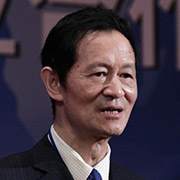The 2014 APEC Summit in Beijing initiated the process toward an eventual realization of the Free Trade Agreement in Asia and Pacific (FTAAP). Summit leaders adopted the “Beijing Roadmap” to reach that end, which envisages, among others, a collective strategic study to be accomplished by the end of 2016. It is a milestone in APEC progress towards Regional Economic Integration (REI), also known as the Bogor goals.
The FTAAP free trade agreement was put forward in 2006, and had remained a vision for the past 8 years before the APEC Beijing Summit. The great contribution of this summit is bringing the FTAAP from words to action.
A Success of Inclusiveness and Joint Efforts
There have been articles and comments that worry China is trying to gain dominance in Asia-Pacific trade agendas by a leading role in FTAAP kick-off, displacing the U.S.-led Trans-Pacific Partnership (TPP).
In the U.S. it was reported that the original plan to start a feasibility study was changed to the wording of “strategic study,” and the expected 2025 deadline was dropped. Nonetheless, all other members of APEC, including the US, unanimously decided to finally kick off an FTAAP study.
In fact, the FTAAP trade agreement suggestion was put forward by the APEC Hanoi Summit 8 years ago, endorsed by all the 21 APEC leaders, including the U.S. president George W. Bush. It is only natural that, China, as the host of 2014 APEC summit, should play the leading role in getting it done. However, the core reason for the final unanimity was that, all the current RTAs and FTAs, including the TPP, could and should continue. The FTAAP will be the ultimate umbrella built on the basis of the former as necessary pathways. Hence, the FTAAP does not conflict with the TPP. In pursuing the FTAAP kick-off, the APEC Beijing Summit fully considered all the existing RTAs and FTAs, the different focuses and interests of various members, only to highlight the shared goals while reserving the particular concerns, thus reaching an inclusive solution through joint efforts.
FTAAP will benefit all APEC Member Economies
Free trade and investment has been a common goal of all APEC members. During the 15 years from the APEC Seattle Summit in 1993 to the global financial crisis in 2008, the average tariff level among intra-APEC trade was lowered from 16.9% to 5.5%, and the intra-APEC trade tripled. Free trade and investment efforts made essential contributions to APEC’s nations’ superior economic performance during and after the global financial crisis and enhanced its role as the powerhouse of world growth and trade.
A joint study by OECD, World Bank and WTO has found that, the WTO Bali trade facilitation pact, if realized, could generate an additional 1 trillion dollars benefit. APEC, with a world trade share of 48%, and intra-APEC share of 67%, will receive the most.
Like other APEC members, both China and the U.S. have vital stakes in intra-APEC trade. APEC members account for 60% of China’s total trade, 83% of its FDI inflows and 70% of its out-bound investment flows. Similarly, APEC gained considerable importance in U.S. global trade over the past 5 years since the global financial crisis. Its share in total U.S. goods exports rose from 58.0% in 2008 to 61.5% in 2013. The U.S. had a net global export increase of US$ 292.1 billion over this period, with APEC members accounted for US$ 223.8 billion, or 76.6%; and the rest of the world contributed only US$ 68.3 billion, or 23.4%. Hence, the FTAAP will be a shared benefit for both China and the U.S., as well as for all the other members.
According Professor Dan Steinbock, when the APEC Hanoi Summit initiated FTAAP vision in 2006, Fred Bergstein, then director of Peterson Institute of International Economies, an influential US think tank, strongly favored FTAAP as the largest single liberalization in history.
Since then, APEC secretariat and member economies have been dedicated to the groundwork. In as early as 2008, the APEC Committee on Trade and Investment (CTI) drafted standard FTAAP chapters; on the basis of filtering all the existing RTAs and FTAs clauses, finding out the convergences and divergences, trying to reach the “greatest common divisor”, while keeping the divergences for talks. “In 2009, Korea led a study on the economic impact of a possible FTAAP and identified specific benefits and challenges to APEC ecnomies."(Source: www.apec.org). In May 2014, the APEC Business Advisory Committee (ABAC) met in Santiago, Chile, strongly appealed for the realization of Bogor Goals by 2020. They were simply reaffirming the same appeal at the same ABAC meeting in the same city in May 2004, exactly 10 years ago.
Fragmentation is a Potential Danger
The necessity of the FTAAP lies not only in the tremendous benefit for all APEC members, but also in the synergy of the world most complicated and intertwined mix of numerous RTAs and FTAs in the region.
The APEC region currently accounts for roughly 70% of total world RTAs and FTAs. The APEC official website cited 56 RTAs within APEC. According to Professor Dan Steinbock citing the Asia Development Bank, there are 109 bilateral FTAs in force and another 148 FTAs under negotiation. If this trend continues, which is most likely, the world largest trade area will be highly fragmented, with different RTAs and FTAs intertwined, only to result in a much higher trading cost and trade non-facilitation. All the APEC members, including the US, will be in an unfavorable competitive position in the world marketplace. No one can image a free APEC connectivity and a strong APEC competitive advantage to be built on this “spagetti” basis. A comprehensive synergy is only inevitable.
The synergy is more imperative in the context of the bleak, uncertain outlook of the world economy over the medium-term. The economic advantages of APEC will not remain forever. If APEC economies waste time in removing APEC-wide trade and investment barriers, get easy access to all the best market resources, and cut down trading cost considerably, there will be a real threat to their sustainable growth and job creation.
TPP and RCEP are all Pathways to FTAAP
The FTAAP does not cast aside all of the RTAs and FTAs. Rather, it hopes for an acceleration and smooth conclusion of them all. The FTAAP will not be mapped out from zero, but will be based on those RTAs and FTAs as pathways.
The TPP is the most important one among all the APEC RTAs and FTAs. The twelve TPP parties are all APEC members, with the U.S. playing the leading role. However, China is excluded so far. The Obama Administration put the conclusion of TPP as a top priority for 2014 trade agenda. However, it seems difficult to hit that goal by year’s end.
Another major RTA is the Regional Comprehensive Economic Partnership, lead by ASEAN, which covers all ten ASEAN countries plus China, Japan, South Korea, India, Australia and New Zealand. China is an important partner, but not a leader. In turn, the U.S. is also excluded so far. RCEP is envisaged to phase-out by the end of 2015.
The 2014 ASEAN Summit on November 12-13 declared a firm resolution to finish negotiations on ASEAN Economic Community (AEC) by the end of 2015. Meanwhile, China-ASEAN FTA upgrade negotiations are also expected to conclude by the end of 2015.
The question now is not whether the role of the TPP will be weakened, but rather whether the TPP can reach an agreement on time. During the two-year period for a strategic study, both the TPP and RCEP have opportunities to conclude, thus providing substantive standard and regulation inputs for the formation of an FTAAP. The FTAAP will continuously absorb the achievements and progresses of the TPP and other RTAs/FTAS, accumulating its “greatest common denominator” and further seeking the highest standards for common rules. The smooth progress of the TPP will contribute to FTAAP formation, and the latter in turn, will also amplify TPP results to an even wider area, with necessary adaptation.
Parallel to FTAAP, TPP, RCEP and others FTA progress, China and the U.S. are focusing on their bilateral arrangement talks, known as the Bilateral Investment Treaty (BIT). President Xi Jinping and President Obama, during their recent meeting the day following the APEC summit, reaffirmed their decision to conclude the core content and clauses by the year end and start talks on drafting a “negative list” early in 2015. The progress of China-U.S. BIT talks will contribute to the progress of the FTAAP, and a shared goal of the FTAAP, in turn, will provide fresh impetus to the BIT towards an early conclusion.



